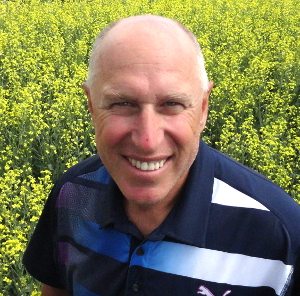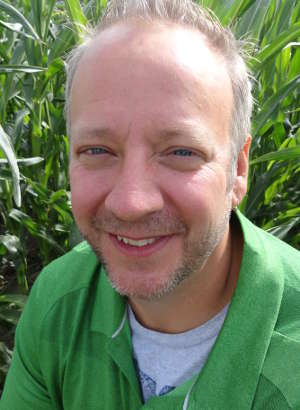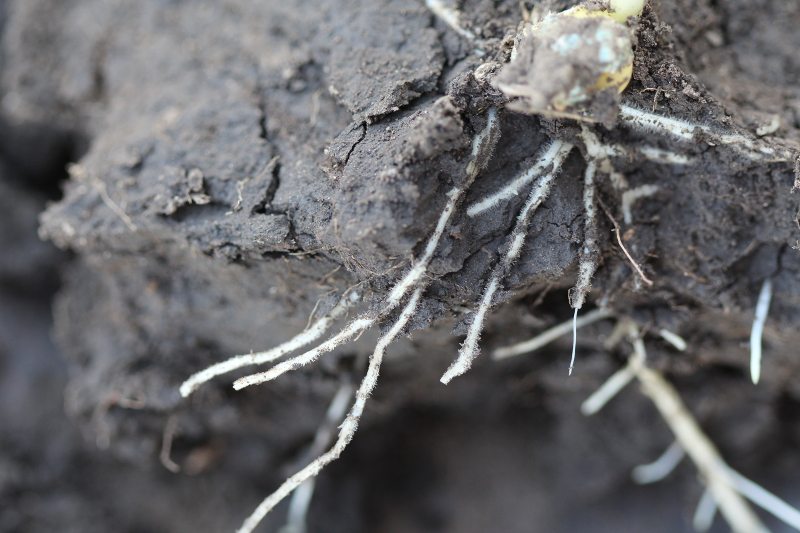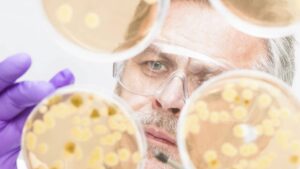As growers look to help plants thrive both below and above ground, the market for seed-applied nutrition, biostimulant and biological products is exploding. We ask some experts about the new world these technologies are helping unlock.

Jarrett Chambers is president of the Manitoba-based ATP Nutrition, a science-based plant nutrient company that develops and commercializes nutrition products and nutrient management plans. Before establishing ATP in 2002, he worked on researching nitrogen used to improve plant productivity. His previous experience includes working in the turf and golf course sector. He completed his graduate degree at the University of Manitoba.

George Lazarovits is research director of A&L Biologicals in London, Ont. He graduated with his doctorate from the University of Toronto and worked as a research scientist in plant pathology at Agriculture and Agri-Food Canada until 2010, when he accepted the position at A&L Biologicals. He leads a staff of five researchers and eight technicians studying plant health from an ecological perspective where both beneficial and detrimental organisms in soil are considered to affect plant vigour.

Jon Treloar is a technical agronomist with Monsanto BioAg in Saskatoon, Sask. He received his science degree from the University of British Columbia and worked in the horticulture and pest management sectors before moving to Saskatchewan in 2005. He works with microbial products in the BioFertility, BioControl and BioYield Enhancement realms, and coordinates competitive trials throughout Western Canada. In this role he provides scientific, agronomic, technical and field support to the BioAg sales and marketing team.

Russell Trischuk has worked with BASF as a technical marketing specialist (Functional Crop Care) since 2010. Based in Saskatoon, Sask., he also worked with BASF in the Research and Commercial Development group from 2006-2008. He received his master of science (biochemistry/plant physiology) from the College of Agriculture at the University of Saskatchewan. He has also held positions as the global canola transformation leader at Dow AgroSciences, research associate in the Department of Plant Sciences at the University of Saskatchewan as well as being a visiting scientist at the Plant Biotechnology Institute at the National Research Council of Canada.

Germination: What does it mean to promote positive interactions in the soil, and what makes plant nutrition, biostimulant and biological products attractive to growers?
Jarrett Chambers: These products offer growers a chance to create better soil health by making a more active root system through proper seed nutrition, and make a more active and vigorous root system through natural extracts that work as biostimulants.
That means the roots acquire more water and nutrients and create a better rhizosphere, which makes a healthier plant, which creates better interactions between the plant and the soil. With biologicals, we’re able to isolate beneficial microorganisms and propagate them to enhance those positive soil interactions in various ways.
George Lazarovits: There’s a huge effort globally to bring these microorganisms into the plant by inoculation of the plants in the flowering stage. In years past is it was all about chemistry — now growers are looking for other options as well. The most crucial element of a plant is its seed. Every seed has a huge amount of microbes on and inside of it. These organisms start to become biologically active as the plants germinate. It’s assumed that a good portion of the plant’s microbiome comes from the seed. The rest comes from the soil, and we can actually influence that relationship in a positive way.
Jon Treloar: It’s creeping into the conversation, the benefits of having a healthy soil microbiome. When you apply a biological to a seed, it gets into the ground. The microbes grow along the roots and persist throughout the season, whereas a chemistry may give you efficacy for a few weeks at the beginning of the season. It’s a different paradigm, a different way of thinking. When a biological is applied to seed, it’s there for the life of the plant and ready to go to work for the grower.
Russell Trischuk: Now that we’re diving more into the soil side of things, we find we get very positive plant advantages like root growth and nutrient uptake with these products. In the rhizosphere, in particular, we are also seeing these positive interactions. Starting to think about soil health is beginning to click with growers. When we can show them a positive benefit it’s not a hard direction to take our customers in — they understand that there are benefits to using these products, and now we need to do a better job understanding what’s happening in the soil and why.
G: What sort of efficacy do these products actually have in promoting those positive soil interactions?
JC: There are a lot of variables. You can’t rob Peter to pay Paul. You can’t simply cut your fertilizer bill and say, ‘I’m going to take that money and buy a biostimulant or a biological product.’ It won’t get you anywhere if the soil has poor nutrition. I always ask the question, ‘Where’s your latest soil sample, what are your yield goals, and what are you putting on for fertilizer?’ Once you’ve addressed those basic questions, then you can look at a biostimulant or biological.
GL: Once growers start manipulating the microbial life in the soil and start enhancing it, their yields begin to go back up. If you take a microbial like a rhizobium, and you inoculate your plants, you can really see a noticeable yield benefit for a very reasonable cost.
JT: It depends. We do a lot of retailer training about this. We spend time talking about the technologies, expectations, and how and where to use and what to expect from our products.
RT: These kinds of products are regulated a little differently than a traditional pesticide would be. The manufacturer has to prove they’re safe for people and environment, but once they’ve proven that, that’s about it. There is no longer a requirement to provide efficacy data, so growers need to be a bit more “buyer beware” with these products. As far as yield goes, different products accomplish different things. Some, for example, provide a stress response, which under ideal conditions may not have as large of an impact. Like with all crop protection products, understanding their fit will be key to having success with them. Ask some hard questions to make sure the products you’re buying have the data to back them up. Seed growers can use these kinds of products on the mother plants they grow seed from — the stress benefits can be significant. Stress can have an effect on seed quality, so having a biological in the soil for the season is hugely valuable, and you’ll see a good impact on that end seed product.
G: How are these products changing over time?
JC: When a plant is under some kind of stress, the root exudates change and what you get are stress-related microorganisms in the rhizosphere. What we did is collect organisms from the healthy part of the rhizosphere, where we discovered a completely different set of microorganisms. If the plant is under stress, we can cut down on those stress-related microorganisms. If it’s healthy, we can give it more of those organisms. We don’t want to make a VW Bug become a racecar. We want to fine-tune a Ferrari to win the Indy 500. It’s a totally different mindset as far as designing products goes.
GL: The soil microbiome is being looked at as a way of improving emergence. It’s becoming a big part of these new technologies, isolating microbes and looking at methods of increasing germination and root growth and taking the seed into consideration. Growers are using a combination of a fertilizer with a biological. It’s a very exciting field.
JT: Up until now, biologicals have focused on fertility. Now we’re exploring biocontrol options and using beneficial bacteria to protect plants from pathogens. The biggest opportunities in the next 10 years are biocontrol options and replacing some chemistry with them.
RT: These types of products originated from the concept of adding a rhizobial for nitrogen fixation. As the market has progressed, new microbes like a bacteria that grows as a biofilm or plaque around the root have been added. These bacteria create a matrix where the bacteria can communicate with one another and the plant through chemical hormonal signals. This plaque can sense that cells of the roots are breaking down, and if there’s a nutrient buildup, the bacteria can take advantage of it as a food source, and in return they provide a positive benefit to the plant’s growth. Innovation is high in this area. If you imagine roots as they move through the soil, cells are dying and sloughing off, and that is an energy cost to the plant. With a biofilm on there, that cost is reduced and the plant doesn’t have to expend so much energy growing roots, and can use it for producing yield.












